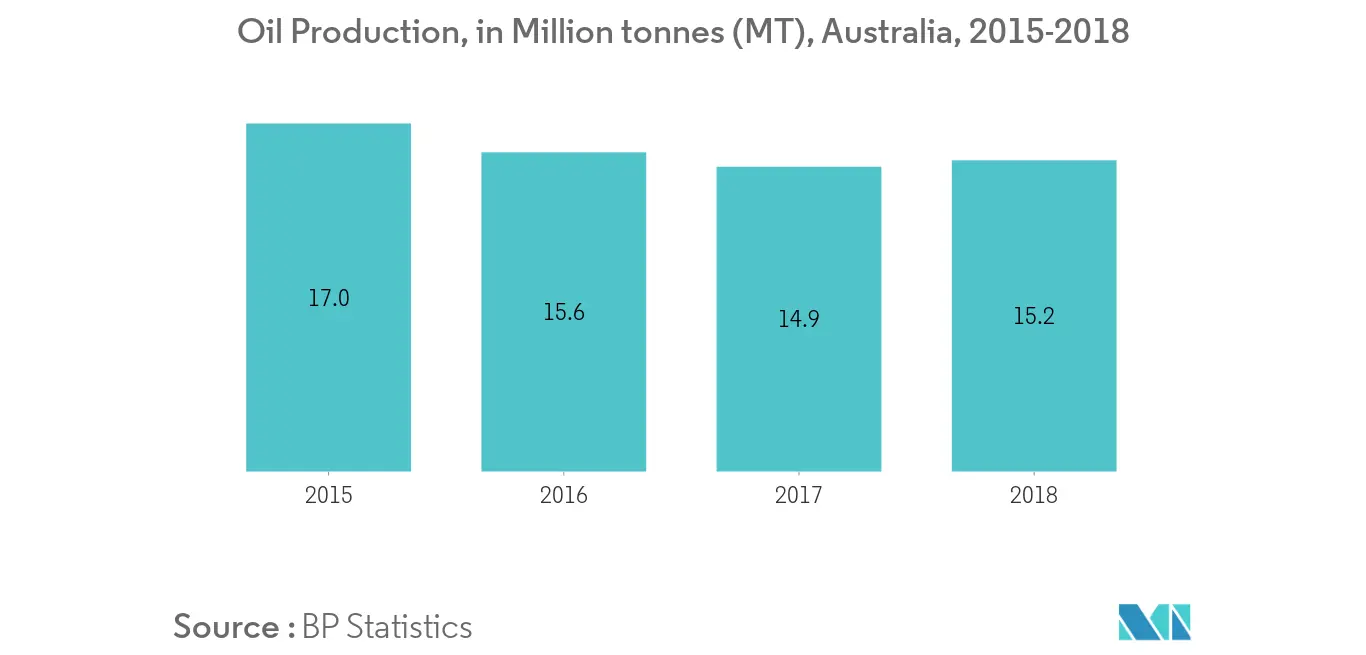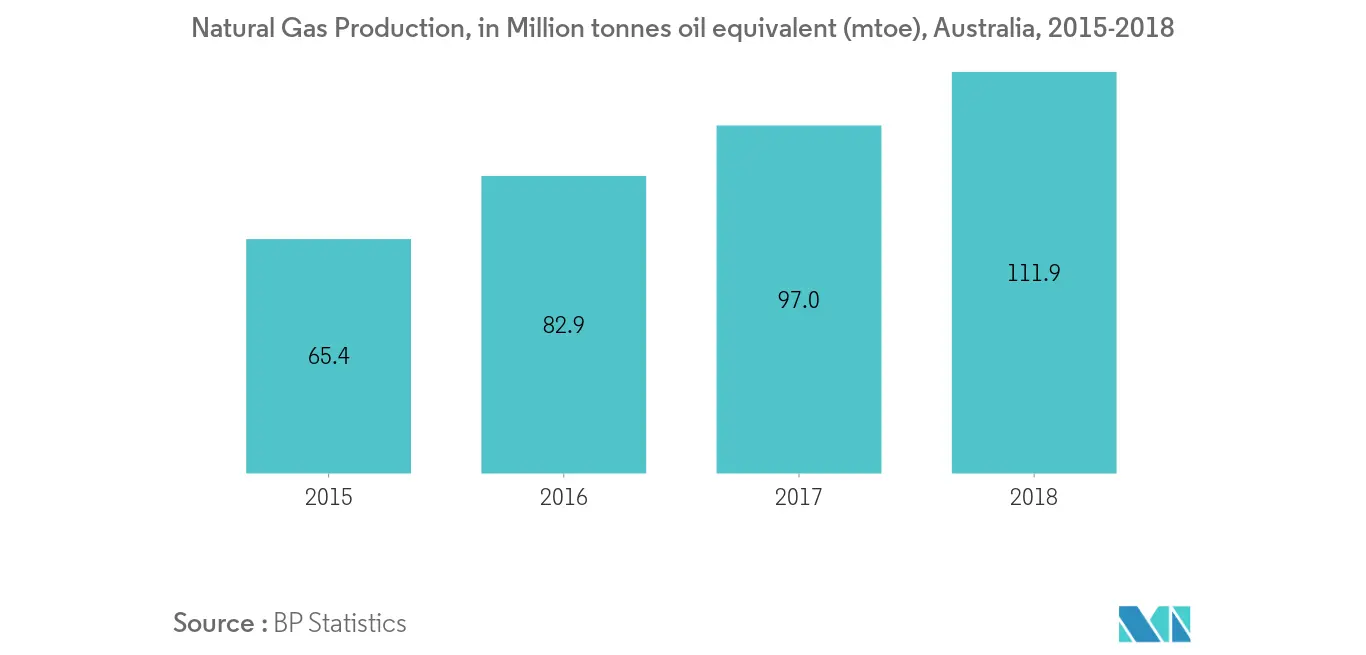Market Trends of Australia Oil and Gas Midstream Industry
This section covers the major market trends shaping the Australia Oil & Gas Midstream Market according to our research experts:
Pipeline Sector to Witness Growth
- In 2019, the Queensland Hunter Gas Pipeline was a proposed natural gas pipeline. The proposed pipeline would run from the Wallumbilla gas hub in Queensland to Newcastle, New South Wales. The pipeline is expected to have a length of, approximately, 825 kilometers (513 Miles) and a capacity of 416.1 million cubic feet per day
- In 2019, Longford to Long Island Point Replacement Oil Pipeline is an operating oil pipeline in Australia. The pipeline runs from Gippsland to Hastings. The pipeline has a length of 175 km (116 miles) and a capacity of 180,000 barrels per day.
- The oil production increased in the country, by 1.5%, from 14.9 million metric ton in 2017 to 15.2 million tonnes in 2018. The oil consumption in the country increased, by 4.5%, year on year, from 48.9 million metric ton of oil equivalent (mtoe), in 2017 to 51.1 mtoe, in 2018. The increase in consumption incentivizes the investors for the required increase in capacity and increases the investments in the future, thereby boosting growth in the industry.
- Hence, the pipeline capacity is expected to increase slightly over the forecast period due to an increase in the consumption of oil and gas and rising investment in the sector.

Increase in Production of Natural Gas to Drive the Market
- Production of natural gas increased in the country, by 15.3%, year on year, from 97.0, million metric ton oil equivalent in 2017 to 111.9 million metric ton oil equivalent, in 2018. Consumption of gas in Australia increased by 0.4%, from 35.5 Million tonnes oil equivalent (mtoe), in 2017 to 35.6 mtoe, in 2018. The increase in production is expected to boost the growth in the pipeline infrastructure.
- In 2019, the Dampier to Bunbury Natural Gas Pipeline is an operating pipeline that runs from the Burrup Peninsula to Brunswick in Western Australia. The length of the pipeline is approximately 1,597 kilometers (992 miles), with a capacity of 744.04 million cubic feet per day.
- Australia has an LNG liquefaction capacity of 75.4 million metric ton per annum (MTPA) with a utilization capacity of 95%. 3.6 MTPA of liquefaction capacity is under construction, and 6.8 MTPA is under the proposal.
- The Australian oil and gas midstream industry is expected to grow considerably over the forecast period due to the expected massive increase in the production and consumption of gas and an increase in the investment into the pipeline and LNG Terminals infrastructure as in the country.


